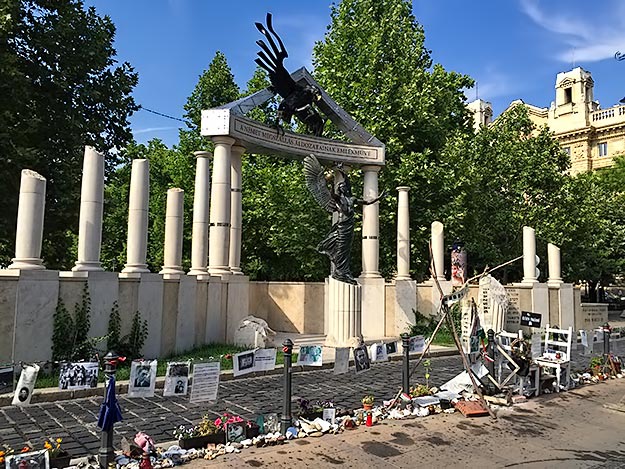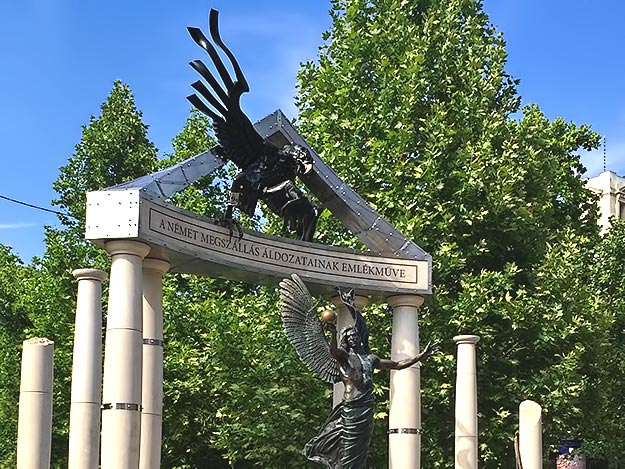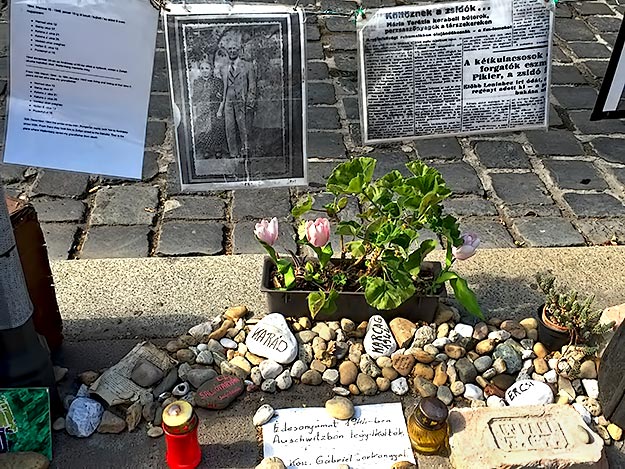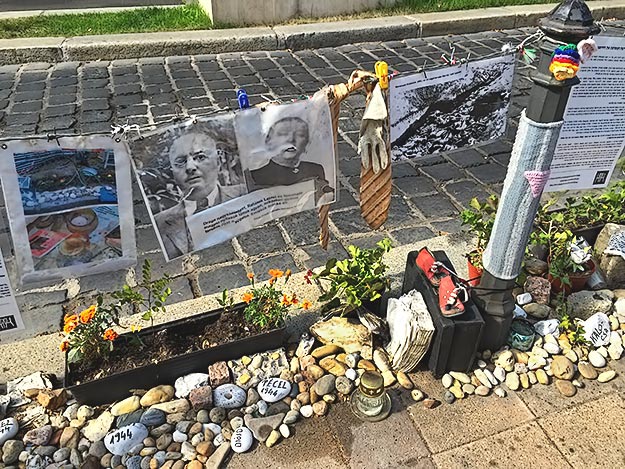Kiraly Street is the new mecca for the younger generation in Budapest. By day shoppers frequent its upscale boutiques, coffee shops, and designer outlets. After dark it hops with nightlife, offering restaurants with multi-ethnic cuisine, ruin pubs, and entertainment venues. It is the new place to see and be seen. But few realize that the glitz and glamour of Kiraly Street rose from a monstrous darkness. Not so many years ago it was the ghetto of Budapest, where Jews were separated from the population at large as they awaited deportation to Nazi concentration camps during World War II.
My Hungarian friend, Zsuzsa Mehez, related this to me when she picked me up at my vacation rental apartment on Kiraly Street. “Very few people know or remember the history of this street,” she said. “In fact, until a few years ago, no one would have dared utter the term “Jewish neighborhood.” Like an ostrich with its head in the sand, for the most part, the government of Hungary seems incapable of acknowledging their willing collaboration with the Nazis during World War II.
There have been a few notable exceptions, including the Shoes on the Danube Bank memorial, which was dedicated in 2005. On the spot in front of the Hungarian Parliament building, where fascist Hungarian militiamen made Jews strip naked and face the river before shooting them, 60 pair of rusting iron shoes line the shore, a poignant reminder of the brutality and inhumanity of the Nazis.

More recently, the proposed installation of a statue dubbed “Memorial to the Victims of the German Invasion,” seemed aimed at rewriting the World War 2 history of Hungary. The design was anticipated to feature a bronze eagle, a well-known symbol of the Nazi Party, swooping down with talons extended over the angel Gabriel, representing Hungary. An inscription would read, “German occupation of Hungary, March 19, 1944.”

The design drew instant criticism, with protesters refuting the implication that Hungary was a victim of the Nazis during World War II. On November 2, 1940, Hungary became the first country to join the Axis alliance. Still simmering over the loss of more than 60 percent of their country following World War I, the government willingly chose collaboration with Nazi Germany in hopes of regaining their lost territories.


The government of Miklos Horthy initially refused to deport Hungary’s 800,000 Jews to concentration camps; however, according to the United States Holocaust Memorial Museum, the Hungarian government had subjected them to “wide-ranging discrimination and taken steps that had already resulted in the deaths of tens of thousands.” When the Nazis occupied Hungary in March of 1944, Horthy authorized the use of the Hungarian military and police to restrict Jews to ghettos like the one in the Kiraly neighborhood, and begin deportation efforts. More than half were sent to Auschwitz, where they were exterminated over the ensuing three months.


Opponents of the sculpture assert that Germans were “welcomed with bouquets rather than bullets,” and insist that the memorial is an attempt to absolve Hungry from any responsibility for the murder of its Jewish, Roma, mentally ill, and homosexual residents during the war. The Hungarian government’s response was to erect the monument, as designed, under cover of darkness on the night of July 20, 2014. Almost immediately, Holocaust survivors, descendants, and sympathetic citizens began leaving personal items at the site, creating a “real memorial, in contrast with the phony monument.” Pebbles, documents, photos, shoes, and battered suitcases have been placed on a makeshift barrier in front of the statue. More than a year later, protesters still gather at the monument most afternoons to create a human chain of resistance, sing songs, and make speeches devoted to keeping alive the history of Hungary’s willing participation in the Holocaust.
To date, there has been no dedication ceremony for “Memorial to the Victims of the German Invasion.”
